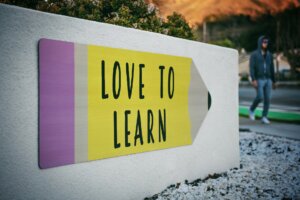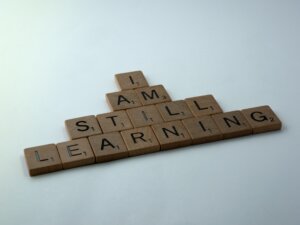Running a presentation skills seminar at a large federal agency’s training forum, I was impressed by how much learning takes place when participants share ideas in a Power Point-free environment.
I found this post on my LinkedIn Training and Development group and some of the responses given by professional trainers and speakers gave me pause. The responses were simple and direct answers to knowing when learning takes place. There can be clues, but no one really knows when learning occurs. This is what gave me pause. And, when I “pause,” I blog. It’s a bit like cursing at a motorist who cuts in front of you, making you drive defensively by applying your brakes before you really want to. Some people curse, I blog.
Many of the responses to the post above, I’m sure, were thoroughly thought out before being taken to the pen, but in the process of trying to sound intellectual and knowing, the responders lost something basic. At least I found something missing. Maybe the forums, while great formats for discussion, are not so good for the final answers. Are we ashamed to say that learning and effective communication are complex, and we don’t have all the answers? More than likely, I think, some of the writers were lost in trying to find one perfect approach to learning. Finding a simple, guaranteed approach to learning for all participants is no simple task. In my mind anyway. It is enough just to communicate well.
Here’s my perspective:
As trainers, we naturally have to be concerned with the amount of information that is actually absorbed by the people we are training. The same goes for presenters. Learning takes place internally. We can only facilitate it. To try to find a way to ensure it happens is something akin to plugging into our brain’s learning center and transferring information. As far as I know, that’s still science fiction.
We could be closer than I know technologically and I could be wrong, but aren’t we trainers and presenters better served to concentrate on what we can to facilitate learning be it through inspiration or motivation, or by outlining the details to make them more accessible? Look back to my post on Training Sessions and Seminars: Who Should Do Most of the Talking? We can try to be all things to all people, but certainly not at the same time. I doubt we can be either, but being the best we can be (please pardon the cliche) is what we need to do. If you want to know what the audience has learned, give them a test, or…I don’t know…ask them. I do. It’s part of the communication process.
The impact of the knowledge presented is related to so many factors, all of which have to do with communication. Even the test is suspicious because of the experimenter or tester bias, where the tested individual wants to please the tester and is, therefore, likely to give an answer that is expected rather than a true answer. Tester bias is a natural human behavior phenomenon that is very difficult to eliminate completely. Tell your audiences what you want them to get out of your presentation and there is a good chance they’ll tell you that’s what they got out of it.
Good communicators constantly look for feedback. I am a fan of PowerPoint but I know many a presenter who uses it spoon feed information and think just because they present content in a visual, it is received, noted, and remembered. A receptive and appreciative audience alone is no gauge.
I think some presenters and speakers think their every word is relished by the audience, evidenced by a laugh or a nod, and would be surprised to find out relatively little real information has reached them. Sometimes it’s not about information but inspiration, motivation, interest, a professional need to be in attendance, etc. I know trainers who do all the right things and are tuned out by their trainees who are not drawn to them as people, so even “chemistry” plays a part.
Those are my thoughts. What are yours?
—
For more resources about training, see the Training library.
 Sections of this topic
Sections of this topic















